Exploring the realm of risk management within trading often unveils a myriad of strategies, each vying for attention and efficacy. In this landscape, the Top 10 Keltner Channels Strategies stand out as stalwarts in guiding traders through turbulent market waters.
From trend pullback tactics to breakout maneuvers, these strategies offer a nuanced approach to risk mitigation that is both intriguing and potentially transformative. By delving into the intricacies of these strategies, traders can unlock a world of possibilities for optimizing their risk management practices and ultimately enhancing their trading outcomes.
Historical Overview of Keltner Channels
Developed in the 1960s by Chester Keltner, Keltner Channels have since played a crucial role in trend determination within financial markets. These channels are designed to encompass the majority of price action, serving as dynamic levels of support and resistance. One key feature of Keltner Channels is their utilization of the Average True Range (ATR) to determine channel width. This approach allows for volatility-based adjustments, making the channels responsive to market conditions.
Originally, Keltner Channels employed a 10-day Simple Moving Average (SMA) of the typical price for calculations. This moving average helped smooth out price fluctuations and provided a reference point for determining the center of the channel. Over time, traders like Linda Raschke have further refined Keltner Channels to improve their functionality and adaptability to different market environments.
In practice, Keltner Channels offer a structured framework for analyzing price movements and identifying potential entry and exit points. By incorporating ATR and SMA, these channels provide a comprehensive view of price dynamics, making them valuable tools for trend following and risk management strategies in trading.
Understanding Keltner Channel Logic
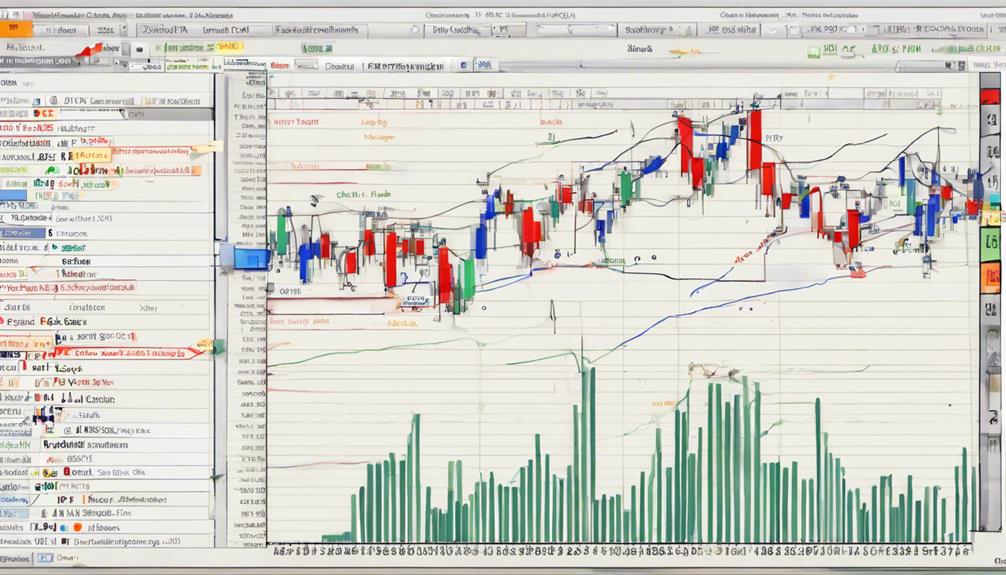
Utilizing an exponential moving average (EMA), Keltner Channels are instrumental in identifying trend direction within financial markets. Understanding the Keltner Channel logic is crucial for effective risk management strategies. Here are key points to grasp:
- Keltner Channel Formula:
The Keltner Channels are constructed using three main components – an EMA, upper band, and lower band. The upper band is typically set at the EMA plus a multiple of the Average True Range (ATR), while the lower band is set at the EMA minus a multiple of the ATR. This construction allows traders to visualize price volatility around the trend.
- EMA in Keltner Channels:
The EMA used in Keltner Channels helps smooth out price data, providing a clearer trend direction. By incorporating the EMA in the calculation of the bands, traders can identify potential trend changes and breakout points more effectively.
- Risk Management Strategies:
Keltner Channels offer dynamic support and resistance levels that traders can utilize for risk management. These levels can help determine entry and exit points, stop-loss placement, and overall trade management, enhancing risk-adjusted returns. Understanding how to interpret and apply these levels is essential for successful risk management when using Keltner Channels.
Pros and Cons of Keltner Channels
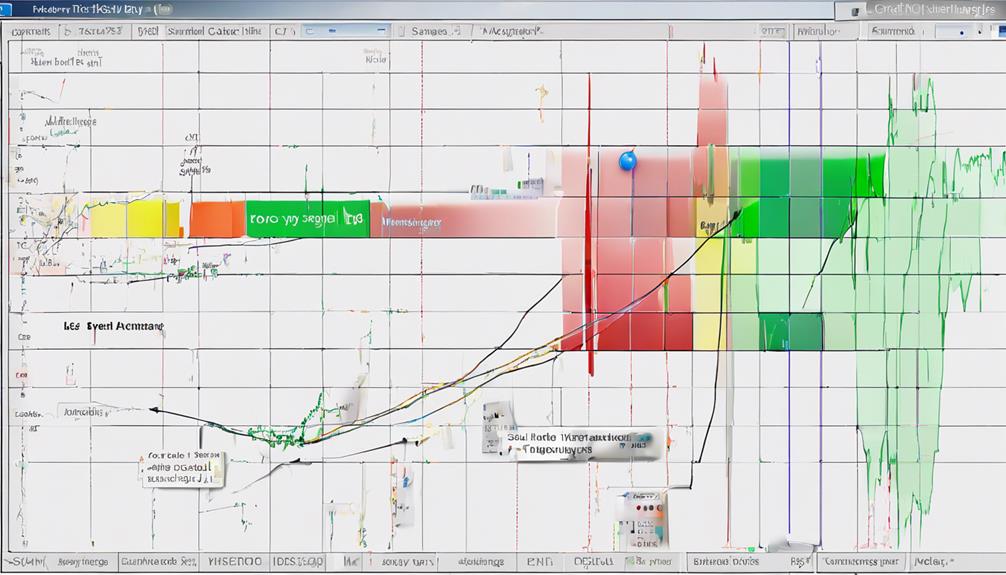
Given the mixed track record and reported limitations of Keltner Channels in trading scenarios, a comprehensive evaluation of their pros and cons is essential for informed decision-making in risk management strategies. Keltner Channels, on average, exhibit a modest 28% win rate in trading, indicating a significant room for improvement in their effectiveness.
One of the primary drawbacks associated with Keltner Channels is their tendency to generate false signals, leading to misguided trading decisions. Moreover, the indicator has shown unreliability across various settings and timeframes, with low success rates reported in testing.
This unreliability is further compounded by the lagging nature of Keltner Channels, where they often fail to keep pace with rapid price movements, resulting in missed opportunities and erroneous signals. The inconsistencies in capturing price action and identifying trend changes also contribute to the overall unreliability of Keltner Channels, making them a challenging tool for traders seeking precision and accuracy in their risk management strategies.
Effective Trading Strategies With Keltner Channels
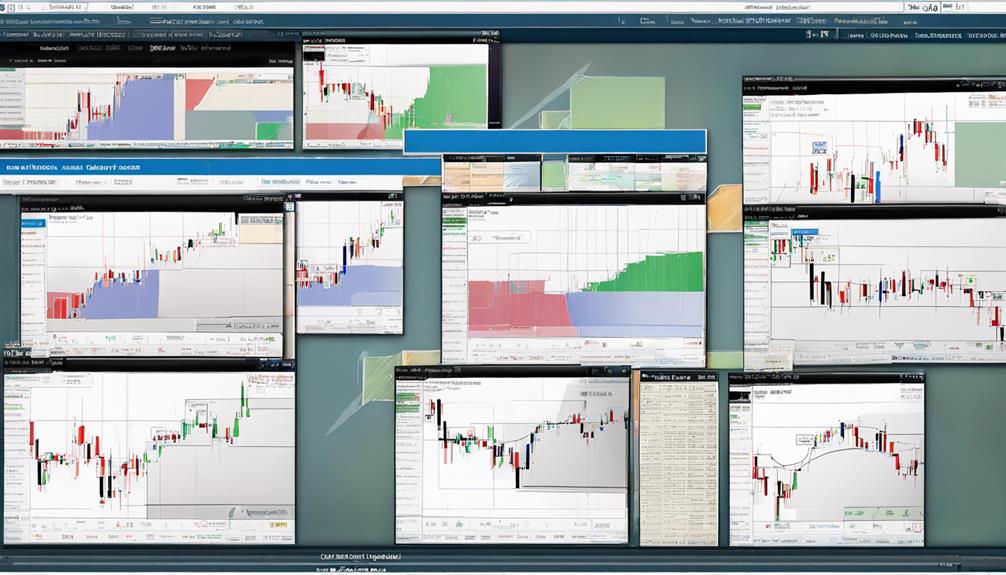
How can traders effectively harness the power of Keltner Channels in developing robust risk management strategies? Utilizing Keltner Channels for risk management involves implementing specific trading strategies to optimize decision-making and enhance profitability.
Here are three effective trading strategies with Keltner Channels:
- Setting Dynamic Stop-Loss and Take-Profit Levels: Keltner Channels can help traders determine appropriate stop-loss and take-profit levels by considering the price volatility within the channel. This dynamic approach ensures that trades are managed based on current market conditions, reducing potential losses and maximizing gains.
- Confirming Trades with Technical Indicators: Combining Keltner Channels with other technical indicators like the Relative Strength Index (RSI) can provide additional confirmation for trade entries and exits. This integration enhances the accuracy of trading signals and reduces false signals, contributing to more reliable risk management.
- Tailoring Strategies to Individual Trading Styles: Adapting Keltner Channel strategies to match individual trading preferences and risk tolerances is crucial for effective risk management. By customizing the parameters of the Keltner Channels, traders can align their strategies with their unique trading styles, optimizing risk management techniques for better outcomes.
Interpreting Keltner Channel Signals
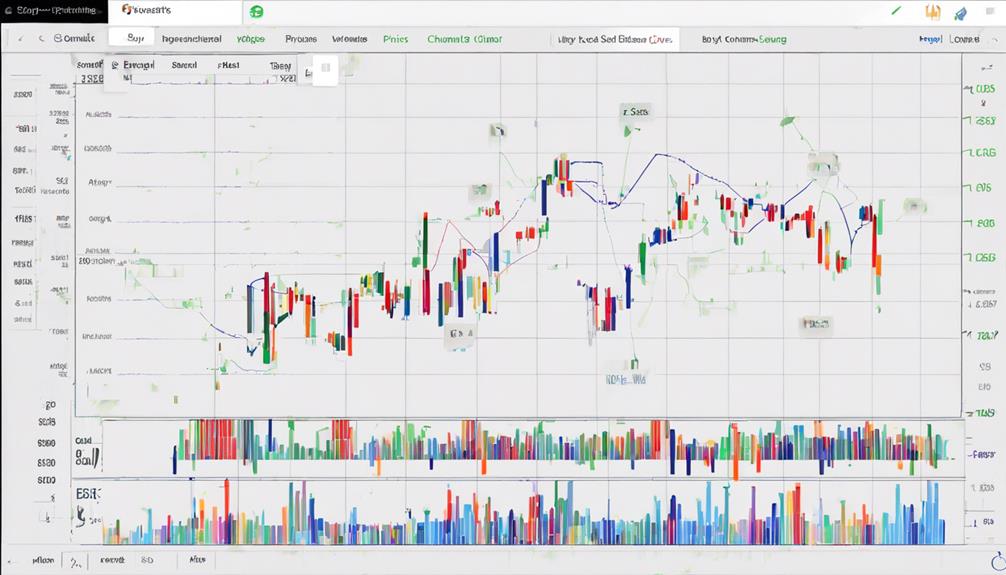
Interpreting Keltner Channel signals provides traders with valuable insights into potential market trends and momentum shifts based on price movements relative to the channel boundaries.
When prices touch the upper band of the Keltner Channels, it indicates overbought conditions, suggesting a potential reversal or period of consolidation. Conversely, touching the lower band signals oversold conditions, implying a possible price bounce or trend reversal.
Breakouts outside the channel boundaries are crucial signals for traders as they suggest potential trend shifts and strong momentum in the market. Traders often adjust their positions based on these signals, which help identify breakout potential and the strength of existing trends.
Additionally, incorporating Exponential Moving Averages (EMAs) to define support and resistance levels can further enhance the accuracy of interpreting Keltner Channel signals, providing traders with a comprehensive framework for breakout trading strategies.
Calculating Keltner Channels Indicator
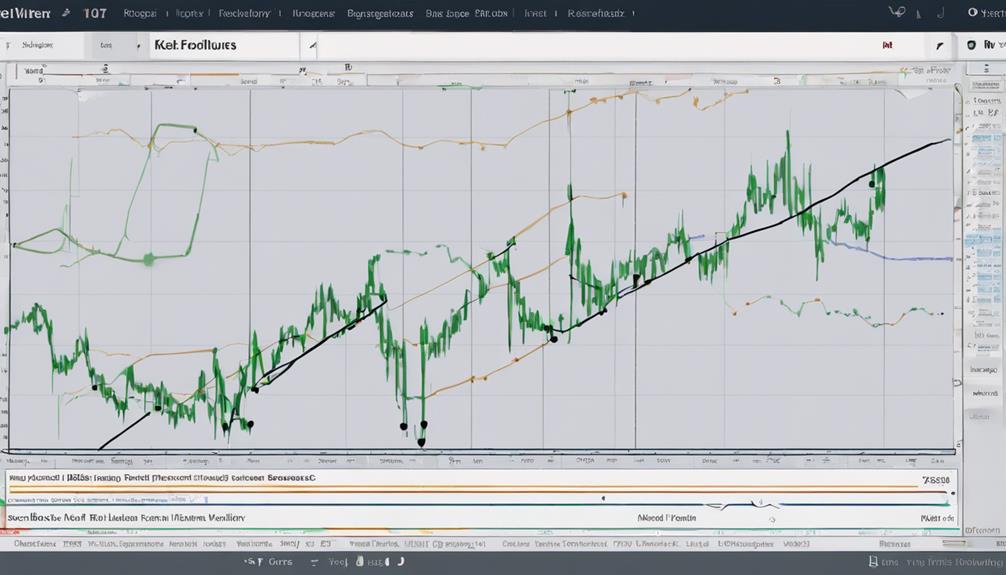
The calculation of the Keltner Channels indicator involves utilizing the 20-day EMA as the centerline for trend determination. By adding and subtracting 2 times the 10-day Average True Range (ATR) to the EMA, the upper and lower bands are established, respectively.
These bands dynamically adjust based on market volatility, providing traders with valuable support and resistance levels for decision-making.
Keltner Channels Formula
The Keltner Channels Formula, a strategic tool employed for risk management, is derived by utilizing a 20-day Exponential Moving Average (EMA) as its central line.
The upper band is calculated as EMA + (2 x ATR(10)), while the lower band is determined as EMA – (2 x ATR(10)). ATR(10) represents the Average True Range over a 10-day period.
These calculations create a channel that adapts to price volatility and direction, providing traders with a visual representation of potential support and resistance levels.
Setting Keltner Channels Parameters
Utilizing a 20-period EMA as the central line, the Keltner Channels indicator is calculated by incorporating the upper band, lower band, and Average True Range (ATR) to provide traders with dynamic support and resistance levels for strategic decision-making in risk management.
The upper band is established by adding 2 times the 10-day ATR to the EMA, while the lower band is determined by subtracting 2 times the 10-day ATR from the EMA. Average True Range values are pivotal in measuring price volatility, which in turn influences the width of the channel.
These parameters enable traders to gauge potential price movements and identify optimal entry and exit points based on the fluctuating market conditions, enhancing risk management strategies effectively.
Optimal Settings for Keltner Channels
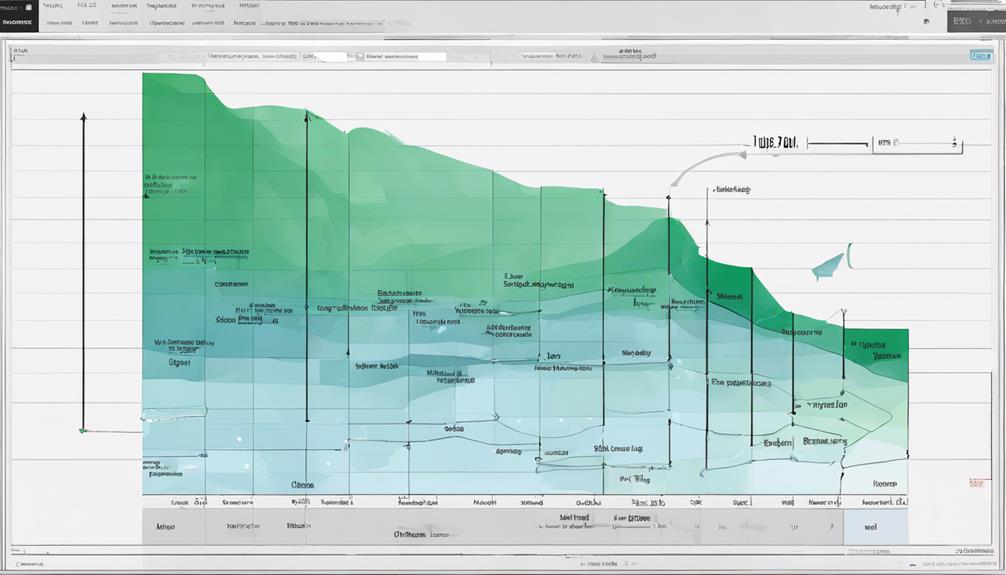
When determining the optimal settings for Keltner Channels, traders often rely on a combination of a 20-period Exponential Moving Average (EMA) and a multiplier of 2x Average True Range (ATR). This setup provides a good balance between sensitivity to price movements and filtering out noise.
To further enhance the effectiveness of Keltner Channels, traders can consider the following:
- Adjusting ATR Multiplier: Modifying the ATR multiplier based on prevailing market conditions can help adapt the width of the channel to suit the current volatility levels, thereby improving the accuracy of the signals generated.
- Experimenting with EMA Periods: Trying out different EMA periods in conjunction with the ATR multiplier is essential for tailoring the Keltner Channels to specific trading strategies. Different EMA lengths can impact the responsiveness of the channels to price changes.
- Slope Analysis: Conducting slope analysis on the Keltner Channel bands enables traders to identify trends and potential breakout points, providing valuable insights for decision-making.
Using Keltner Channels for Risk Management
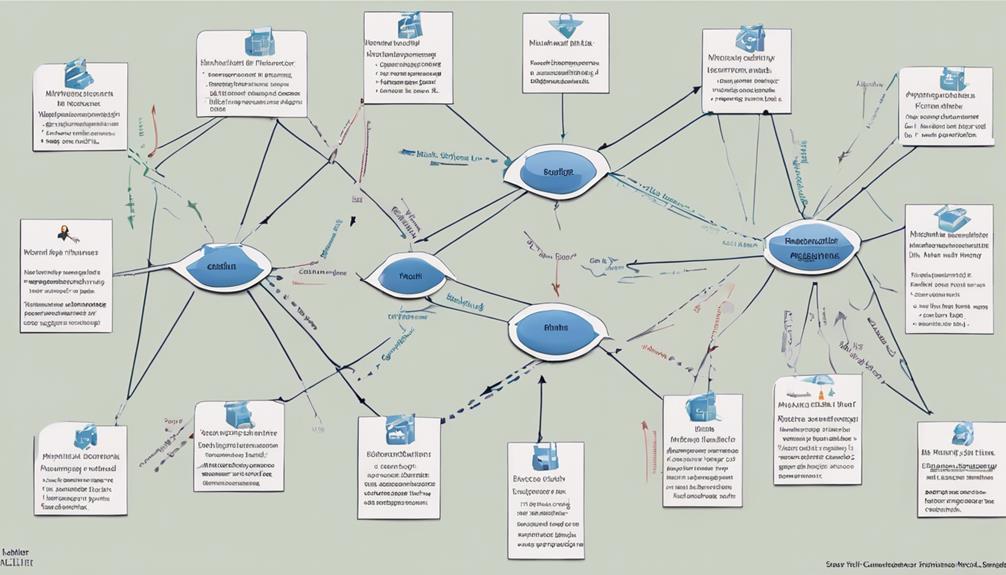
Keltner Channels offer traders a systematic approach to setting risk parameters by leveraging price volatility dynamics. Monitoring volatility levels within the channels enables traders to adjust their position sizes effectively to align with market conditions.
Setting Risk Parameters
Risk parameters in risk management, particularly when using Keltner Channels, play a crucial role in defining dynamic support and resistance levels. This helps traders make informed decisions on when to enter or exit trades based on the channel's movements.
When setting risk parameters with Keltner Channels, traders can:
- Determine Stop Loss Levels: By observing channel breakouts, traders can establish appropriate stop loss levels to limit potential losses.
- Adjust Position Sizes: Adapting position sizes according to the channel's volatility can help manage risk exposure effectively.
- Set Target Prices: Analyzing price movements within the channel enables traders to set realistic target prices for their trades, enhancing overall trade planning and decision-making processes.
Monitoring Volatility Levels
Monitoring volatility levels through Keltner Channels is a strategic approach that leverages the Average True Range (ATR) to evaluate price fluctuations and assess potential risk in trading scenarios. By utilizing ATR, traders can gauge the average price range over a specified period, providing valuable insights into market volatility.
This information is crucial for setting appropriate stop-loss orders, aligning risk tolerance with market conditions. Understanding volatility levels through Keltner Channels aids in determining optimal position sizes, contributing to effective risk management strategies.
Adjusting Position Sizes
By adjusting position sizes based on signals derived from the width of the Keltner Channels, traders can effectively manage risk exposure in dynamic market conditions. Implementing the following strategies can help optimize risk management using Keltner Channels:
- Utilize the width of the Keltner Channel: Adjust position sizes by considering the distance between price and the channel boundaries.
- Scale into trades near lower channel: Increase positions when prices are near the lower channel to capitalize on potential reversals.
- Scale out near upper channel: Decrease positions as prices reach the upper channel to secure profits and manage risk effectively.
These methods enable traders to control risk exposure by aligning position sizes with Keltner Channel signals, enhancing risk management strategies in volatile market environments.
Combining Keltner Channels With Other Indicators
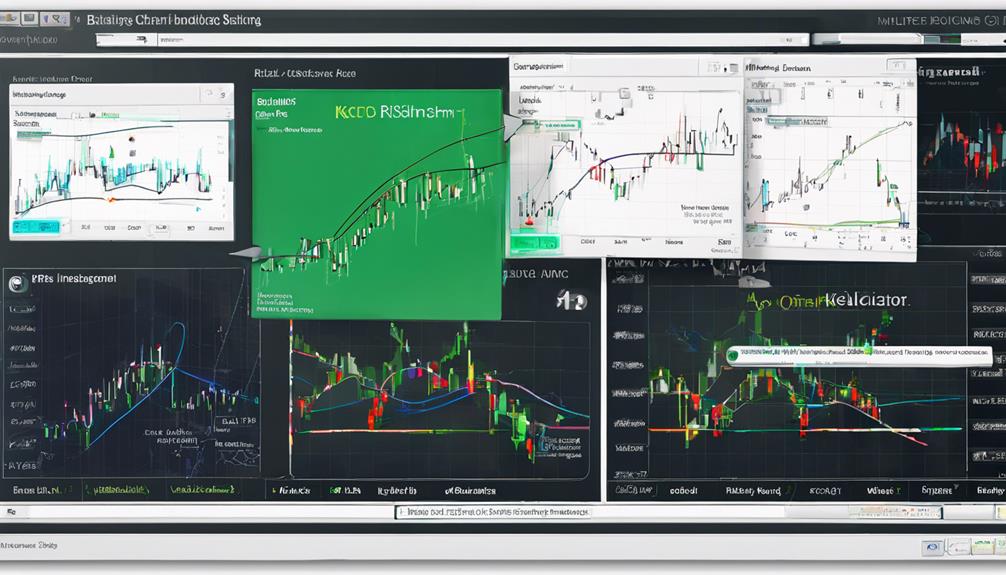
The integration of Keltner Channels with other technical indicators enhances trading strategies by providing a more comprehensive analysis of market trends and potential entry and exit points. Combining Keltner Channels with the RSI indicator can be particularly beneficial for range trading strategies, as the RSI helps identify overbought and oversold conditions within the channel boundaries.
Additionally, adding the ADX indicator to Keltner Channels can validate breakout signals, especially for trend-following strategies, by confirming the strength of a new trend. For traders looking to capitalize on pullbacks, using a 2-period RSI alongside Keltner Channels can pinpoint favorable entry levels during temporary reversals.
Moreover, integrating Keltner Channels with the Ichimoku indicator creates a robust trend prediction system. Combining them with the 200-period EMA and Kumo cloud from Ichimoku allows for the establishment of personalized stop-loss and take-profit levels, enhancing risk management within trading strategies.
Assessing the Reliability of Keltner Channels
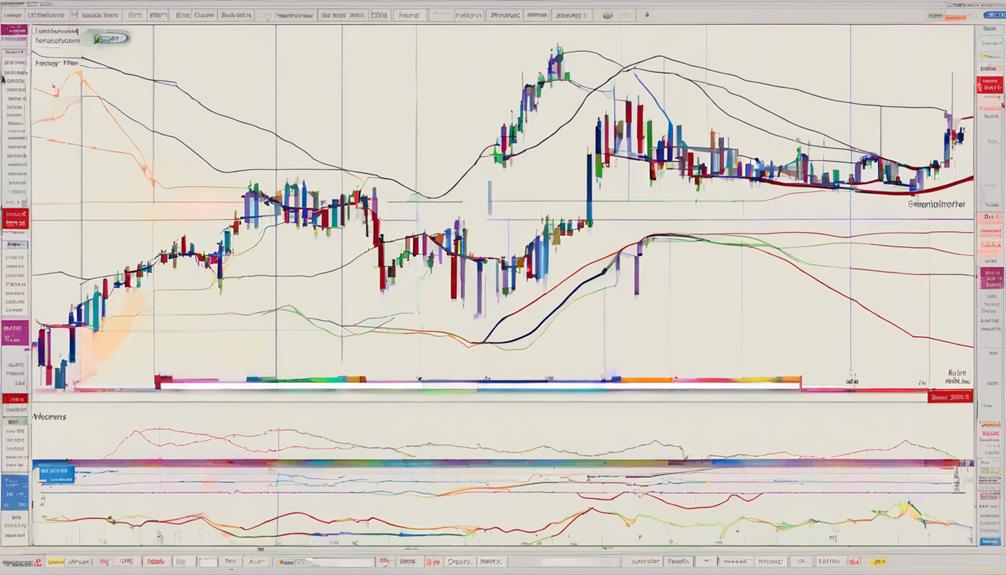
The assessment of Keltner Channels' reliability hinges on factors such as Channel Validity Assessment, Signal Strength Analysis, and Historical Performance Evaluation.
Analyzing these components can provide insights into the effectiveness of Keltner Channels in capturing price action and generating trading signals.
Channel Validity Assessment
When evaluating the reliability of Keltner Channels, the effectiveness of accurately depicting price movements is a critical aspect to consider. Traders rely on specific methods to assess the validity of these channels:
- Conducting thorough historical price data analysis to understand how well Keltner Channels have performed in various market conditions.
- Backtesting results play a crucial role in determining the channel's reliability by simulating trades based on historical data.
- Utilizing statistical measures such as win rates and success ratios helps traders gauge the effectiveness of Keltner Channels in identifying potential trading opportunities.
Signal Strength Analysis
To assess the reliability of Keltner Channels in generating buy and sell signals, signal strength analysis is imperative for traders seeking effective risk management strategies. Evaluating historical data on signal accuracy and performance is crucial to determine the consistency of Keltner Channels in different market conditions.
Traders rely on understanding the probability of false signals and the win rate associated with Keltner Channels to optimize their risk management approaches. By conducting signal strength analysis, traders can make well-informed decisions on when to enter or exit trades, thereby enhancing their risk management practices.
This analytical assessment of signal strength is fundamental for traders aiming to maximize the utility of Keltner Channels in their trading strategies while minimizing potential risks.
Historical Performance Evaluation
Upon reviewing historical data on Keltner Channels, it becomes evident that their reliability in trading is marked by an average win rate of 28%.
Historical Performance Evaluation:
- Testing across various settings reveals a tendency for false signals and unreliable performance.
- Backtesting on different timeframes indicates low success rates and inconsistency in capturing trends.
- Keltner Channels often lag behind price movements, generating numerous false signals.
Can the Keltner Channels Strategies be Applied for Risk Management in Trading?
Yes, the simple steps for Keltner Channels can definitely be applied for risk management in trading. By using this technical analysis tool, traders can identify potential entry and exit points, as well as set stop-loss orders to mitigate risk. The Keltner Channels strategy is a valuable resource for managing risk in trading.
Frequently Asked Questions
What Is the Best Strategy for the Keltner Channel?
The best strategy for the Keltner Channel involves combining it with other indicators to confirm signals, such as the ADX indicator for breakout validation. Optimal settings usually feature a 20-period EMA and adjusting the ATR multiplier based on market conditions.
What Is the Success Rate of the Keltner Channel?
The success rate of the Keltner Channel, a technical analysis tool, varies based on historical data, averaging at 28%. It is known for generating unreliable signals due to lagging price movements, highlighting the need for caution and alternative risk management strategies.
What Is the King Keltner Trading Strategy?
The King Keltner Trading Strategy is a method that combines Keltner Channels with other indicators to analyze price movements for identifying trend reversals and breakouts. It integrates stop-loss and take-profit levels, enhancing risk management.
Is Keltner Channel a Leading Indicator?
Keltner Channels are not considered leading indicators as they rely on historical price data and moving averages. They provide insights based on past price movements rather than predicting future price action. Traders often combine them with leading indicators for better trading decisions.
Conclusion
In conclusion, the Top 10 Keltner Channels Strategies offer traders a powerful tool for managing risk and making informed trading decisions. By leveraging the dynamic support and resistance levels provided by Keltner Channels, traders can navigate market fluctuations with confidence.
When combined with other technical indicators, these strategies can enhance trading outcomes and optimize portfolio performance. Embrace the Keltner Channels as your compass in the turbulent seas of the market, guiding you towards success.
